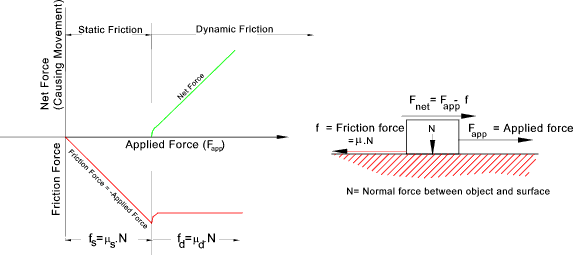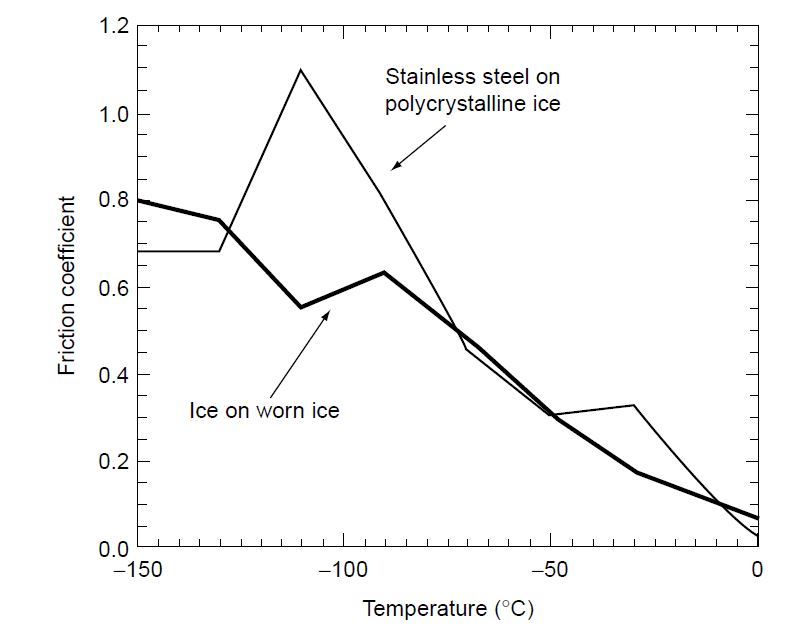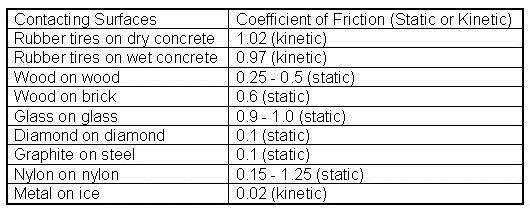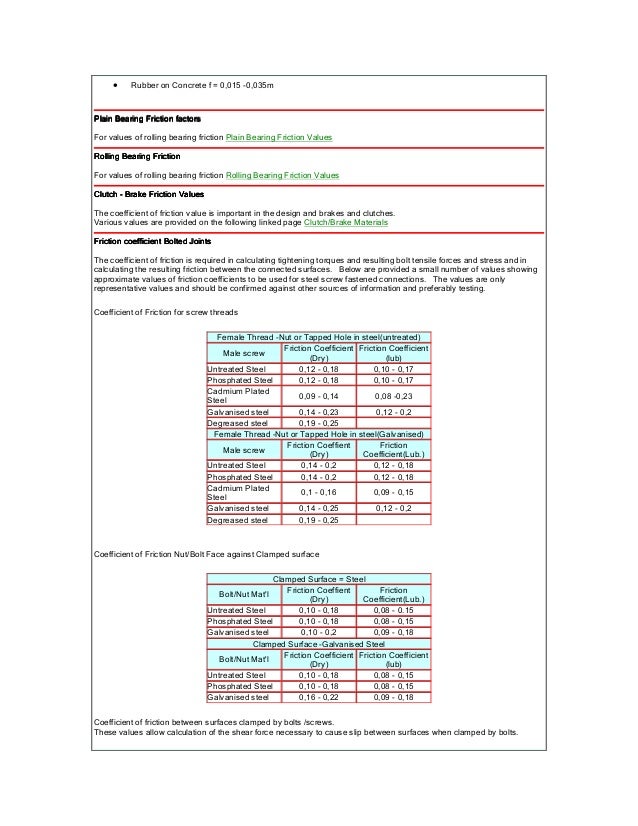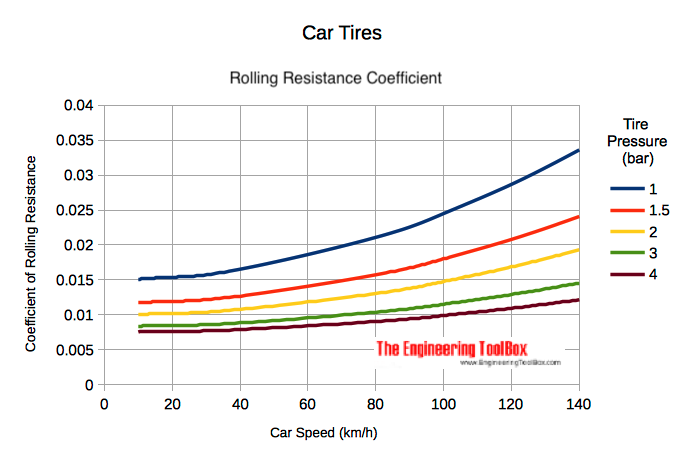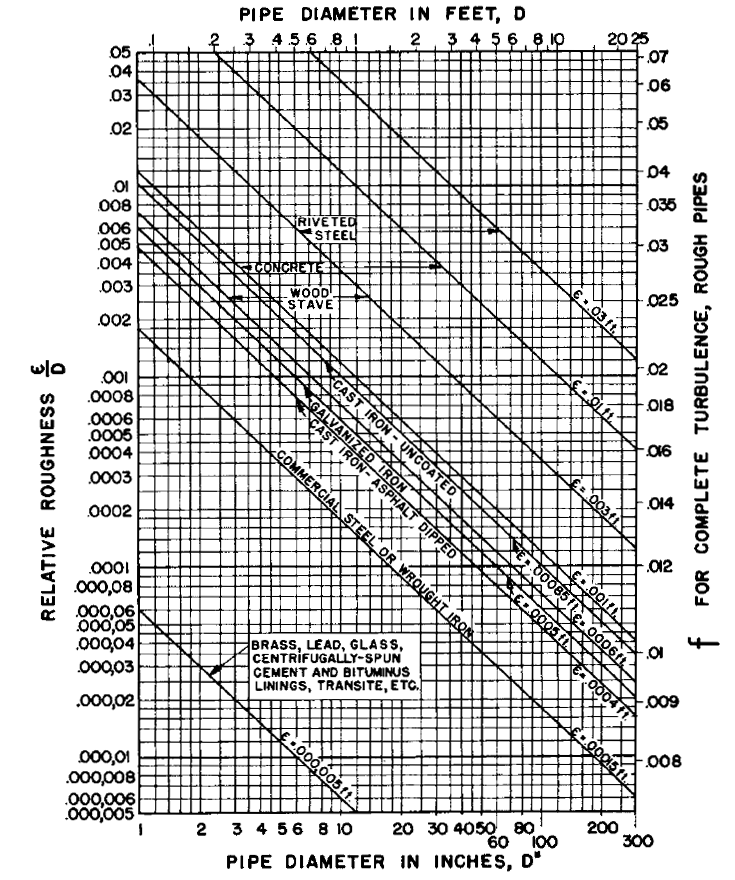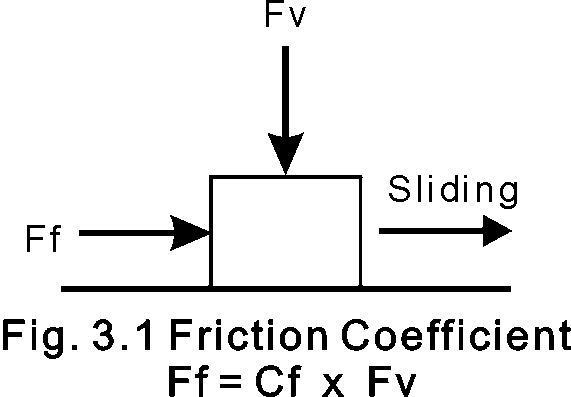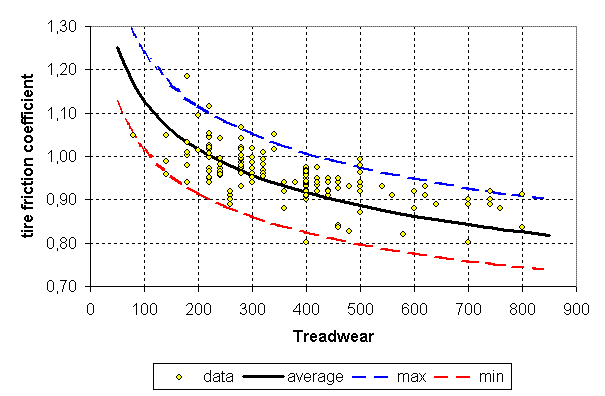Static friction is friction between two or more solid objects that are not moving relative to each other.
Value of coefficient of friction between steel and rubber.
A car with mass 2000 kg drives with speed 100 km h on a wet road with friction coefficient 0 2.
The basic raw materials are coal iron ore limestone and various chemicals.
The coefficient of friction is the ratio of a force to a force and hence has no units.
The static and kinetic friction coefficient values reference table shown in this article will be helpful for finding the cof values of commonly used materials.
The making of steel involves many processes and stages.
The two main frictions used are static friction and kinetic friction.
However it is possible to find tables in the literature for friction coefficients between various materials.
Coefficients of friction between materials are best determined through testing.
F f 0 62 100 lb 62 lb 1 lb 0 4536 kg.
Where μ s is the coefficient of static friction and μ k is the coefficient of kinetic friction.
Static and kinetic coefficient of friction.
The coefficient of static friction for steel is around 0 6 0 15 and the coefficient of kinetic friction is around 0 09 0 6.
The dynamic coefficient of friction are.
Typical values for the coefficient of friction when sliding is occurring i e.
The coefficient of static friction typically denoted as μ s is usually higher than the coefficient of kinetic friction.
Showing the concept of coefficient of friction.
The friction force can be calculated as.
For glass on glass 0 4.
For rubber on tarmac close to 1 0.
For polished oiled metal surfaces less than 0 1.
For example static friction can prevent an object from sliding down a sloped surface.

